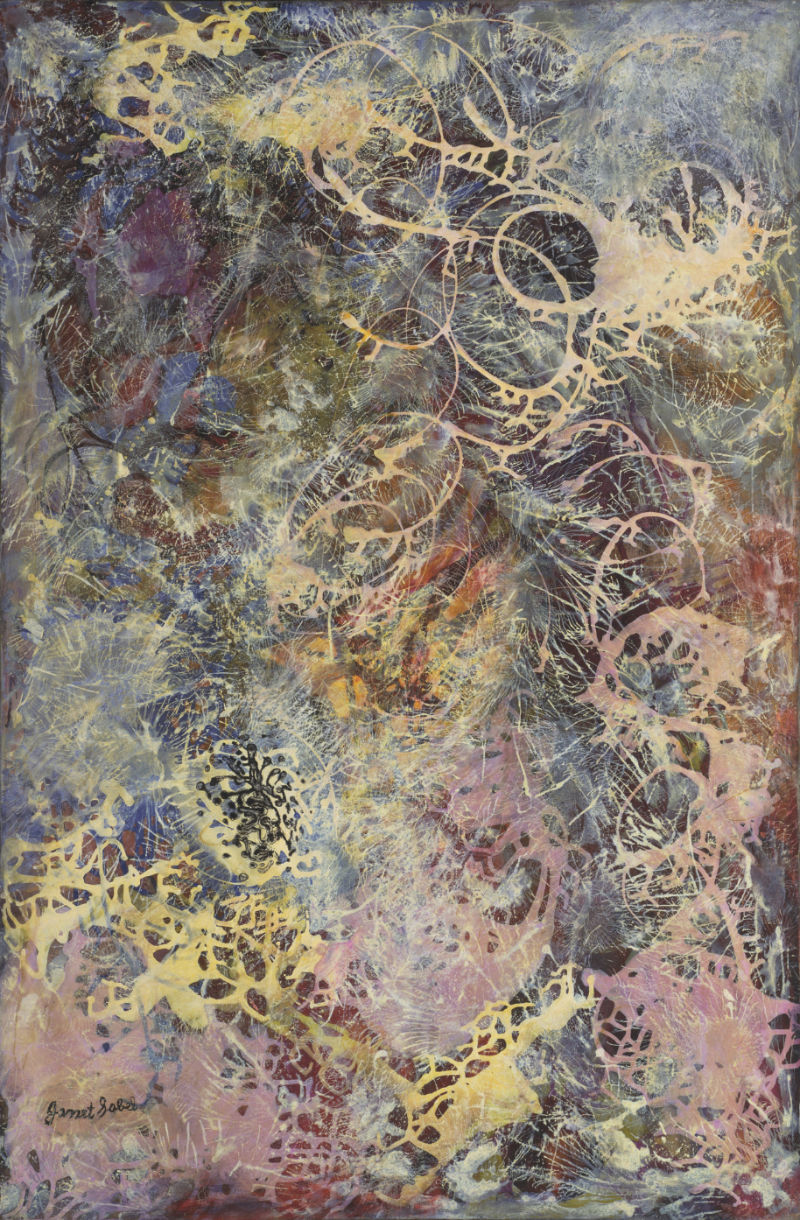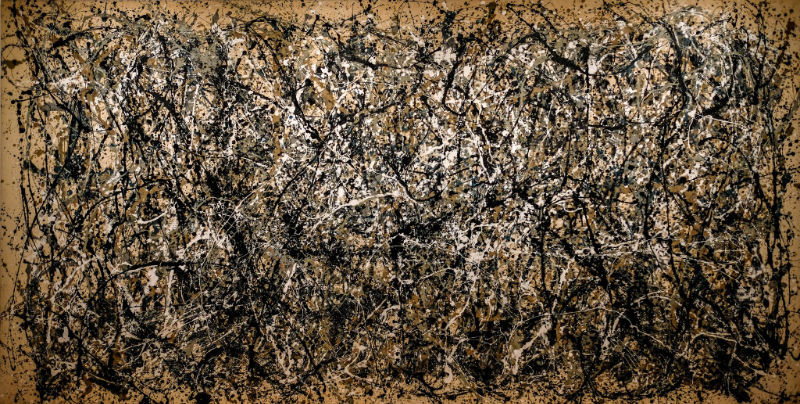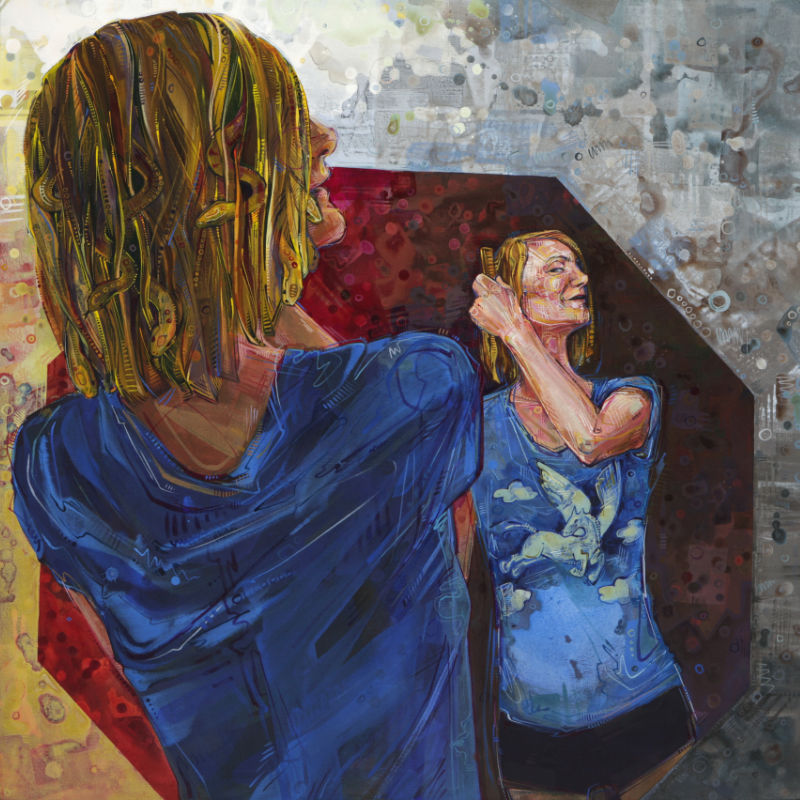Blog / 2022 / After Janet Sobel: On Jackson Pollock and Text-to-image AI Art
June 10, 2022
Over my years as an uncopyrighter, I’ve praised the idea of artists citing their sources again and again, noting the way it helps them to be more connected to their artistic process, how it’s clearly the right thing to do, and even doing my TEDx talk on the topic. I’ve celebrated when my own style was cited as inspiration and booed when my influence has gone unnamed. But in all that time, I never let go of the notion that the simple act of citation made all the difference.
Until now.
Upon learning that Jackson Pollock cited Janet Sobel—an artist I’d never heard of—as influencing him to create his brand-name drip paintings, I had to admit that citation isn’t enough.

The story goes that Pollock and one of the most famous critics of the post World War II era, Clement Greenberg, were both struck by Sobel’s work. They admitted it publicly—huzzah!—but, as far as I can tell, the acknowledgment only happened in Greenberg’s essay “‘American-type’ Painting,” published eight long years after Pollock began making drip paintings—hiss! And, far from being a positive mention, Sobel’s influence was cited with a woman-hating word salad of male self-importance.
Meanwhile, Sobel’s New York success was short-lived. Is it because she moved away from the City? Because she developed an allergy to paint, leading her to work primarily in pencil and ink after 1948? Or is it that, spurred on by Greenberg, enough people viewed her as nothing more than a self-taught housewife?
Whatever the reason, simple citation clearly isn’t enough. Context matters.
I like to imagine a world where Greenberg wasn’t a misogynist and potentially a shill for the CIA, working to promote a Pollocky kind of American individualism around the world.* What would Janet Sobel have created if powerful people had said her name without qualifying it with descriptors that made her easy to dismiss?

All of which brings me to today, and the text-to-image AI art generated by Midjourney and the like. You can prompt these computer programs with words, including the names of famous artists, and they make images to your specifications. This technology creates a situation where anyone can imagine a picture in a particular artist’s style and then, with the right phrasing, make it happen. (Vox’s report on text-to-image AI shows some fun examples.)
I don’t have access to Midjourney—I applied for the beta by filling out a revealing little questionnaire, but apparently having a photo filter named after your style doesn’t automatically make you hip enough to access the technology. Still, if I had to guess, I’d wager that Sobel’s name wouldn’t prove useful for the program, at least not in the way Pollock’s would.
That’s not surprising, of course. Since artificial intelligence is a “garbage in, garbage out” kind of a scene that’s not too dissimilar from the human brain, the technology is only as smart as its givens. The unfortunate lot of Sobel is almost certainly baked in by the snapshot of culture that the AI was fed.
But that isn’t even what really grates my carrots. I mean, yes, I’m upset about yet another woman’s creativity being appropriated by men, but, at the moment, I’m more worried about all of the Janet Sobels yet to come. I’m talking about the artists whose names we’ll know so that we can use them as image descriptors, but whose full story and humanity—whose context—will remain obscured by a new powerful figure: AI that not only turns text into images, but also transforms an artist’s whole life and oeuvre into nothing more than a prompt.

Terrorist
2018
acrylic on unmounted canvas
24 x 35 inches
(This original painting is available for $1100 and there are prints.)
Citing sources is still good practice and something that I hope will become embedded in text-to-image technology, but context matters more than ever.
For example, until recently, I didn’t know that this painting made in 2018—one of my many images that includes layers of dripped paint—owed a debt to an artist named Janet Sobel. I knew it represented the very kind of toxic masculinity and violent individualism that the CIA was championing in the Cold War, but I didn’t understand the deeper levels of that poison.

Artist
2009
acrylic on canvas
36 x 36 inches
(This painting is part of Subjective, a very drippy series.)
Please don’t let future Janet Sobels fade away. Make the effort to cite sources as well as the context for the art you love. And, as always, please find ways to get money to the artists you love! Here are some ways to support my work.
* I talk about Pollock’s oeuvre as government-funded propaganda in this post, but there’s plenty of documentation of the CIA’s role in bringing massive fame and fortune to this white dude who, unlike many of his artistic peers, was not a recent immigrant to the US.
Did this post make you think of something you want to share with me? I’d love to hear from you!
To receive an email every time I publish a new article or video, sign up for my special mailing list.

